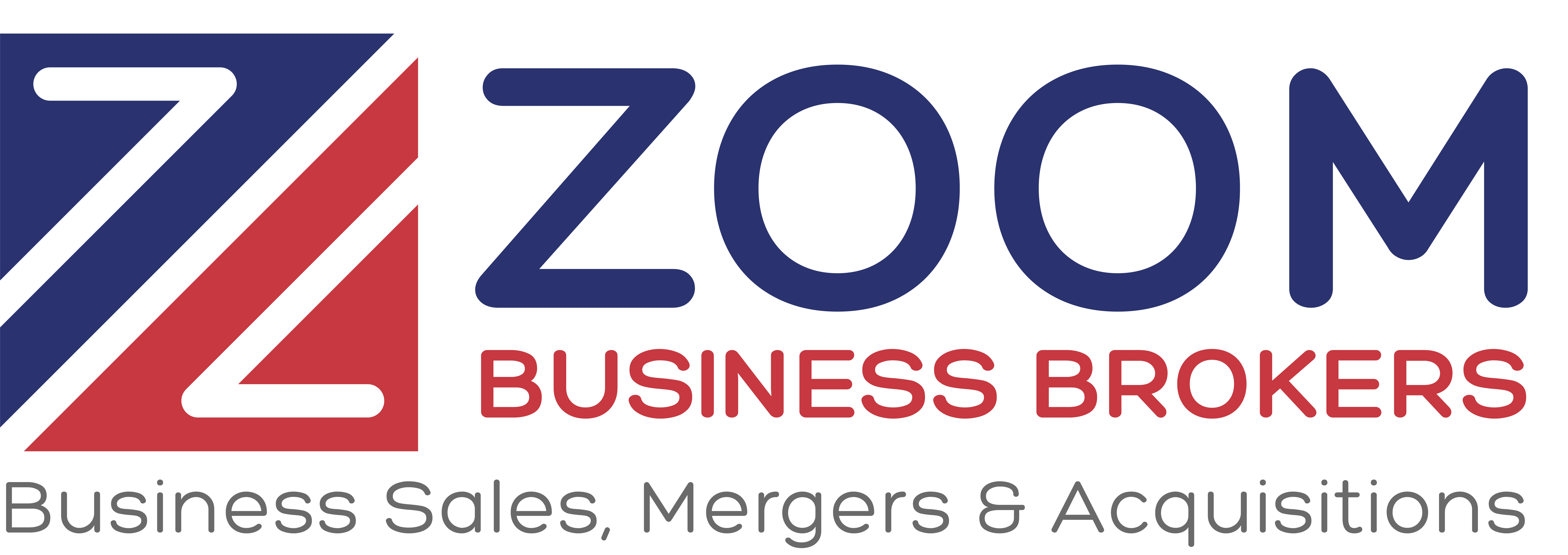
Is Your “Normalized” P&L Statement Normal?
Normalized Financial Statements – Statements that have been adjusted for items not representative of the current status of the business. Normalizing statements could include such adjustments as a non-recurring event, such as attorney fees expended in litigation. Another non-recurring event might be a plant closing or adjustments of abnormal depreciation. Sometimes, owner’s compensation and benefits need to be restated to reflect a competitive market value.
Privately held companies, when tax time comes around, want to show as little profit as possible. However, when it comes time to borrow money or sell the business, they want to show just the opposite. Lenders and prospective acquirers want to see a strong bottom line. The best way to do this is to normalize, or recast, the profit and loss statement. The figures added back to the profit and loss statement are usually termed “add backs.” They are adjustments added back to the statement to increase the profit of the company.
For example, legal fees used for litigation purposes would be considered a one-time expense. Or, consider a new roof, tooling or equipment for a new product, or any expensed item considered to be a one-time charge. Obviously, adding back the money spent on one or more of these items to the profit of the company increases the profits, thus increasing the value.
Using a reasonable EBITDA, for example an EBITDA of five, an add back of $200,000 could increase the value of a company by one million dollars. Most buyers will take a hard look at the add backs. They realize that there really is no such thing as a one-time expense, as every year will produce other “one-time” expenses. It’s also not wise to add back the owner’s bonuses and perks unless they are really excessive. The new owners may hire a CEO who will require essentially the same compensation package.
The moral of all this is that reconstructed earnings are certainly a legitimate way of showing the real earnings of a privately held company unless they are puffed up to impress a lender or potential buyer. Excess or unreasonable add backs will not be acceptable to buyers, lenders or business appraisers. Nothing can squelch a potential deal quicker than a break-even P&L statement padded with add backs.
© Copyright 2015 Business Brokerage Press, Inc.
Photo Credit: DodgertonSkillhause via morgueFile
Read More
Do You Have an Exit Plan?
“Exit strategies may allow you to get out before the bottom falls out of your industry. Well-planned exits allow you to get a better price for your business.”
From: Selling Your Business by Russ Robb, published by Adams Media Corporation
Whether you plan to sell out in one year, five years, or never, you need an exit strategy. As the term suggests, an exit strategy is a plan for leaving your business, and every business should have one, if not two. The first is useful as a guide to a smooth exit from your business. The second is for emergencies that could come about due to poor health or partnership problems. You may never plan to sell, but you never know!
The first step in creating an exit plan is to develop what is basically an exit policy and procedure manual. It may end up being only on a few sheets of paper, but it should outline your thoughts on how to exit the business when the time comes. There are some important questions to wrestle with in creating a basic plan and procedures.
The plan should start with outlining the circumstances under which a sale or merger might occur, other than the obvious financial difficulties or other economic pressures. The reason for selling or merging might then be the obvious one – retirement – or another non-emergency situation. Competition issues might be a reason – or perhaps there is a merger under consideration to grow the company. No matter what the circumstance, an exit plan or procedure is something that should be developed even if a reason is not immediately on the horizon.
Next, any existing agreements with other partners or shareholders that could influence any exit plans should be reviewed. If there are partners or shareholders, there should be buy-sell agreements in place. If not, these should be prepared. Any subsequent acquisition of the company will most likely be for the entire business. Everyone involved in the decision to sell, legally or otherwise, should be involved in the exit procedures. This group can then determine under what circumstances the company might be offered for sale.
The next step to consider is which, if any, of the partners, shareholders or key managers will play an actual part in any exit strategy and who will handle what. A legal advisor can be called upon to answer any of the legal issues, and the company’s financial officer or outside accounting firm can develop and resolve any financial issues. Obviously, no one can predict the future, but basic legal and accounting “what-ifs” can be anticipated and answered in advance.
A similar issue to consider is who will be responsible for representing the company in negotiations. It is generally best if one key manager or owner represents the company in the sale process and is accountable for the execution of the procedures in place in the exit plan. This might also be a good time to talk to an M&A intermediary firm for advice about the process itself. Your M&A advisor can provide samples of the documents that will most likely be executed as part of the sale process; e.g., confidentiality agreements, term sheets, letters of intent, and typical closing documents. The M&A advisor can also answer questions relating to fees and charges.
One of the most important tasks is determining how to value the company. Certainly, an appraisal done today will not reflect the value of the company in the future. However, a plan of how the company will be valued for sale purposes should be outlined. For example, tax implications can be considered: Who should do the valuation? Are any synergistic benefits outlined that might impact the value? How would a potential buyer look at the value of the company?
An integral part of the plan is to address the due diligence issues that will be a critical part of any sale. The time to address the due diligence process and possible contentious issues is before a sale plan is formalized. The best way to address the potential “skeletons in the closet” is to shake them at this point and resolve the problems. What are the key problems or issues that could cause concern to a potential acquirer? Are agreements with large customers and suppliers in writing? Are there contracts with key employees? Are the leases, if any, on equipment and real estate current and long enough to meet an acquirer’s requirements?
The time to address selling the company is now. Creating the basic procedures that will be followed makes good business sense and, although they may not be put into action for a long time, they should be in place and updated periodically.
© Copyright 2015 Business Brokerage Press, Inc.
Photo Credit: dhester via morgueFile
Read MoreBuying (or Selling) a Business
The following is some basic information for anyone considering purchasing a business. Is may also be of interest to anyone thinking of selling their business. The more information and knowledge both sides have about buying and selling a business, the easier the process will become.
A Buyer Profile
Here is a look at the make-up of the average individual buyer looking to replace a lost job or wanting to get out of an uncomfortable job situation. The chances are he is a male (however, more women are going into business for themselves, so this is rapidly changing). Almost 50 percent will have less than $100,000 in which to invest in the purchase of a business. More than 70 percent will have less than $250,000 to invest. In many cases the funds, or part of them, will come from personal savings followed by financial assistance from family members. He, or she, will never have owned a business before. Despite what he thinks he wants in the way of a business, he will most likely buy a business that he never considered until it was introduced, perhaps by a business broker.
His, or her primary reason for going into business is to get out of his or her present situation, be it unemployment, job disagreement, or dissatisfaction. The potential buyers now want to do their own thing, be in charge of their own destiny, and they don’t want to work for anyone. Money is important, but it’s not at the top of the list, in fact, it is probably fourth or fifth on their priority list. In order to pursue the dream of owning one’s own business, the buyer must be able to make that “leap of faith” necessary to take the plunge. Once that has been made, the buyer should review the following tips.
Importance of Information
Understand that in looking at small businesses, you will have to dig up a lot of information. Small business owners are not known for their record-keeping. You want to make sure you don’t overlook a “gem” of a business because you don’t or won’t take the time it takes to find the information you need to make an informed decision. Try to get an understanding of the real earning power of the business. Once you have found a business that interests you, learn as much as you can about that particular industry.
Negotiating the Deal
Understand, going into the deal, that your friendly banker will tell you his bank is interested in making small business loans; however, his “story” may change when it comes time to put his words into action. The seller finances the vast majority of small business transactions. If your credit is good, supply a copy of your credit report with the offer. The seller may be impressed enough to accept a lower-than-desired down payment.
Since you can’t expect the seller to cut both the down payment and the full price, decide which is more important to you. If you are attempting to buy the business with as little cash as possible, don’t try to substantially lower the full price. On the other hand, if cash is not a problem (this is very seldom the case), you can attempt to reduce the full price significantly. Make sure you can afford the debt structure–don’t obligate yourself to making payments to the seller that will not allow you to build the business and still provide a living for you and your family.
Furthermore, don’t try to push the seller to the wall. You want to have a good relationship with him or her. The seller will be teaching you the business and acting as a consultant, at least for a while. It’s all right to negotiate on areas that are important to you, but don’t negotiate over a detail that really isn’t key. Many sales fall apart because either the buyer or the seller becomes stubborn, usually over some minor detail, and refuses to bend.
Due Diligence
The responsibility of investigating the business belongs to the buyer. Don’t depend on anyone else to do the work for you. You are the one who will be working in the business and must ultimately take responsibility for the decision to buy it. There is not much point in undertaking due diligence until and unless you and the seller have reached at least a tentative agreement on price and terms. Also, there usually isn’t reason to bring in your outside advisors, if you are using them, until you reach the due diligence stage. This is another part of the “leap of faith” necessary to achieve business ownership. Outside professionals normally won’t tell you that you should buy the business, nor should you expect them to. They aren’t going to go out on a limb and tell you that you should buy a particular business. In fact, if pressed for an answer, they will give you what they consider to be the safest one: “no.” You will want to get your own answers–an important step for anyone serious about entering the world of independent business ownership.

The Deal Is Almost Done — Or Is It?
The Letter of Intent has been signed by both buyer and seller and everything seems to be moving along just fine. It would seem that the deal is almost done. However, the due diligence process must now be completed. Due diligence is the process in which the buyer really decides to go forward with the deal, or, depending on what is discovered, to renegotiate the price – or even to withdraw from the deal. So, the deal may seem to be almost done, but it really isn’t – yet!
It is important that both sides to the transaction understand just what is going to take place in the due diligence process. The importance of the due diligence process cannot be underestimated. Stanley Foster Reed in his book, The Art of M&A, wrote, “The basic function of due diligence is to assess the benefits and liabilities of a proposed acquisition by inquiring into all relevant aspects of the past, present, and predictable future of the business to be purchased.”
Prior to the due diligence process, buyers should assemble their experts to assist in this phase. These might include appraisers, accountants, lawyers, environmental experts, marketing personnel, etc. Many buyers fail to add an operational person familiar with the type of business under consideration. The legal and accounting side may be fine, but a good fix on the operations themselves is very important as a part of the due diligence process. After all, this is what the buyer is really buying.
Since the due diligence phase does involve both buyer and seller, here is a brief checklist of some of the main items for both parties to consider.
Industry Structure
Figure the percentage of sales by product line, review pricing policies, consider discount structure and product warranties; and if possible check against industry guidelines.
Human Resources
Review names, positions and responsibilities of the key management staff. Also, check the relationships, if appropriate, with labor, employee turnover, and incentive and bonus arrangements.
Marketing
Get a list of the major customers and arrive at a sales breakdown by region, and country, if exporting. Compare the company’s market share to the competition, if possible.
Operations
Review the current financial statements and compare to the budget. Check the incoming sales, analyze the backlog and the prospects for future sales.
Balance Sheet
Accounts receivables should be checked for aging, who’s paying and who isn’t, bad debt and the reserves. Inventory should be checked for work-in-process, finished goods along with turnover, non-usable inventory and the policy for returns and/or write-offs.
Environmental Issues
This is a new but quite complicated process. Ground contamination, ground water, lead paint and asbestos issues are all reasons for deals not closing, or at best not closing in a timely manner.
Manufacturing
This is where an operational expert can be invaluable. Does the facility work efficiently? How old and serviceable is the machinery and equipment? Is the technology still current? What is it really worth? Other areas, such as the manufacturing time by product, outsourcing in place, key suppliers – all of these should be checked.
Trademarks, Patents & Copyrights
Are these intangible assets transferable, and whose name are they in. If they are in an individual name – can they be transferred to the buyer? In today’s business world where intangible assets may be the backbone of the company, the deal is generally based on the satisfactory transfer of these assets.
Due diligence can determine whether the buyer goes through with the deal or begins a new round of negotiations. By completing the due diligence process, the buyer process insures, as far as possible, that the buyer is getting what he or she bargained for. The executed Letter of Intent is, in many ways, just the beginning.
Buying a Business – Some Key Consideration
- What’s for sale? What’s not for sale? Is real estate included? Is some of the machinery and/or equipment leased?
- Is there anything proprietary such as patents, copyrights or trademarks?
- Are there any barriers of entry? Is it capital, labor, intellectual property, personal relationships, location – or what?
- What is the company’s competitive advantage – special niche, great marketing, state-of-the-art manufacturing capability, well-known brands, etc.?
- Are there any assets not generating income and can they be sold?
- Are agreements in place with key employees and if not – why not?
- How can the business grow? Or, can it grow?
- Is the business dependent on the owner? Is there any depth to the management team?
- How is the financial reporting handled? Is it sufficient for the business? How does management utilize it?
Selling Your Business? Expect the Unexpected!
According to the experts, a business owner should lay the groundwork for selling at about the same time as he or she first opens the door for business. Great advice, but it rarely happens. Most sales of businesses are event-driven; i.e., an event or circumstance such as partnership problems, divorce, health, or just plain burn-out pushes the business owner into selling. The business owner now becomes a seller without considering the unexpected issues that almost always occur. Here are some questions that need answering before selling:
How much is your time worth?
Business owners have a business to run, and they are generally the mainstay of the operation. If they are too busy trying to meet with prospective buyers, answering their questions and getting necessary data to them, the business may play second fiddle. Buyers can be very demanding and ignoring them may not only kill a possible sale, but will also reduce the purchase price. Using the services of a business broker is a great time saver. In addition to all of the other duties they will handle, they will make sure that the owners meet only with qualified prospects and at a time convenient for the owner.
How involved do you need to be?
Some business owners feel that they need to know every detail of a buyer’s visit to the business. They want to be involved in this, and in every other detail of the process. This takes away from running the business. Owners must realize that prospective buyers assume that the business will continue to run successfully during the sales process and through the closing. Micromanaging the sales process takes time from the business. This is another reason to use the services of a business broker. They can handle the details of the selling process, and they will keep sellers informed every step of the way – leaving the owner with the time necessary to run the business. However, they are well aware that it is the seller’s business and that the seller makes the decisions.
Are there any other decision makers?
Sellers sometimes forget that they have a silent partner, or that they put their spouse’s name on the liquor license, or that they sold some stock to their brother-in-law in exchange for some operating capital. These part-owners might very well come out of the woodwork and create issues that can thwart a sale. A silent partner ceases to be silent and expects a much bigger slice of the pie than the seller is willing to give. The answer is for the seller to gather approvals of all the parties in writing prior to going to market.
How important is confidentiality?
This is always an important issue. Leaks can occur. The more active the selling process (which benefits the seller and greatly increases the chance of a higher price), the more likely the word will get out. Sellers should have a back-up plan in case confidentiality is breached. Business brokers are experienced in maintaining confidentiality and can be a big help in this area.
